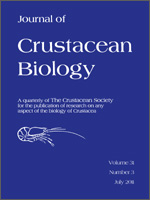The pandalid Heterocarpus vicarius is a deepwater shrimp, commercially exploited along the Pacific coast of Costa Rica and neighboring countries. The constant decrease of commercial landings in recent years has provoked an increasing concern about the sustainability of this deepwater resource. To facilitate an adequate management of H. vicarius, we examined 240 ovigerous females collected between 2004 and 2007. Females ranged in size between 29.4 and 45.4 mm carapace length and carried on average 15,008 newly-extruded eggs. To our best knowledge, the maximum of 33,549 eggs for H. vicarius is the highest number so far reported for any pandalid species. During embryogenesis, the average number of eggs decreased by 46.9%, while the average egg volume increased by 53.3%. Average egg volumes were statistically different between early (Stage I: 0.045 mm3) and late (Stage III: 0.069 mm3) development. The egg mass volume comprised on average 17.8% of the dry weight of ovigerous females (Stage I). Although fecundity increased significantly with female size, the relation between reproductive output (Stage I) and female size was not significant. We compare our results with those from other pandalids, especially with the closely-related H. reedi from Chilean waters.
How to translate text using browser tools
1 July 2011
Egg Production of the Commercially Exploited Deepwater Shrimp, Heterocarpus vicarius (Decapoda: Pandalidae), Pacific Costa Rica
Silvia Echeverría-Sáenz,
Ingo S. Wehrtmann
ACCESS THE FULL ARTICLE
It is not available for individual sale.
This article is only available to subscribers.
It is not available for individual sale.
It is not available for individual sale.

Journal of Crustacean Biology
Vol. 31 • No. 3
July 2011
Vol. 31 • No. 3
July 2011
Costa Rica
deepwater fishery
egg loss
fecundity
Heterocarpus
reproductive output




